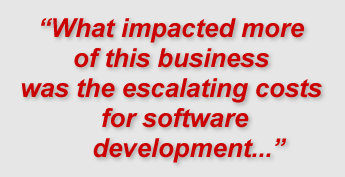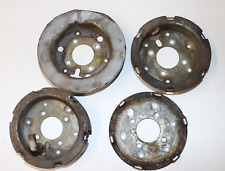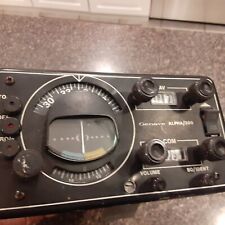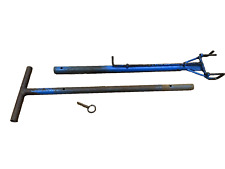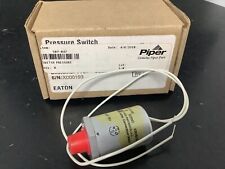An update to our virtual roundtable series
Introduction
SimHQ has published The Future of Simulations virtual roundtable reports over the past decade about the status and future of our hobby. It is interesting to compare earlier roundtables with this one, and see how things have changed, and how in the past decade some things haven’t changed at all. As part of SimHQ’s 2010 year-end reports, we thought it was time once again to ask those who are responsible for the insight, development, marketing and sales of the simulation marketplace where we are and where do they think we are headed next.
Our discussion centers around six major topic areas:
- Consumer Simulations
- Software Development
- Controllers and Peripherals
- Multiplayer
- Distribution and Publishing
- Copy Protection and Intellectual Property
Participants
Our participants in the roundtable are well known individuals in consumer simulations:
| Babak Nobary – XSIDante De Patta – Thunder WorksJason Williams – 777 Studios
Julian “Buckshot” Leonard – XSI Mark “Polovski” Rogers – OBD Software |
Nils “Ssnake” Hinrichsen – eSim GamesOleg Maddox – Maddox GamesRichard “Flexman” Hawley – Tricubic Studios
Vladimir Zayarniy – Graviteam |
Consumer Simulations
20mm: Thanks to everyone for taking their time to join our discussion. Our first question is, how would you describe the state of the consumer simulation business today?
Buckshot: Thank you very much for the opportunity to participate, we place a very high priority on communication with the community and gain much from questions such as these which help us to challenge our thought processes.
In the early days of flight simulation on home computers, hardware was the bottleneck. The know-how to build flight simulations was there but the ability to process data and render graphics was very limited. As hardware evolved, more complex flight simulations became available. This reached a climax when we enjoyed many simulations for the F-15, F-18, Su-27 and of course the F-16 among many others.
 As hardware became more powerful, developers quite naturally started to add more features and detail into their simulations. For the first time we all saw the possibility of having a good flight model and a dynamic realtime campaign, a 3D cockpit and many other features within a single product. This bubble burst with the release of Falcon 4.0 with all the issues that surrounded it, for the first time we became familiar with the complexity barrier in developing flight simulations.
As hardware became more powerful, developers quite naturally started to add more features and detail into their simulations. For the first time we all saw the possibility of having a good flight model and a dynamic realtime campaign, a 3D cockpit and many other features within a single product. This bubble burst with the release of Falcon 4.0 with all the issues that surrounded it, for the first time we became familiar with the complexity barrier in developing flight simulations.
Today, the bottleneck has shifted from hardware to complexity. Don’t get me wrong, even hardware available today is woefully inadequate if we want to develop a flight simulation by academic standards, but it is very much possible create a simulation that is believable and enjoyable to the serious flight simulation enthusiast. With the expectation set to have features ranging from high fidelity flight models to realistic graphics to dynamic campaigns and many other features as a standard, the development of a flight simulation is now a truly multi-disciplinary exercise in engineering. Most modules in a modern flight simulation summarize one or more engineering fields, these modules need to talk together in harmony and need to do it effectively at over 30 frames per second!
In conclusion, the biggest challenge facing the consumer flight simulation developer is conquering the complexity of this multi-faceted task. This has seen many of the major developers move away from flight simulation to more profitable areas, or produce evolutions of existing and previous simulations.
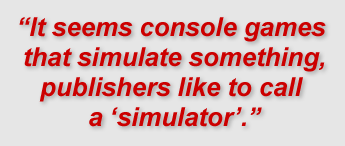 Oleg: It seems console games that simulate something, publishers like to call a “simulator”. Even if it is a “simulator” of a flying dragon, it is still a simulator to them. But the real niche of the simulation audience is PC users. Only on PCs is it possible to develop real simulation games that could be popular for a long time compared to “simulators” on consoles that may be popular for a brief time after its release.
Oleg: It seems console games that simulate something, publishers like to call a “simulator”. Even if it is a “simulator” of a flying dragon, it is still a simulator to them. But the real niche of the simulation audience is PC users. Only on PCs is it possible to develop real simulation games that could be popular for a long time compared to “simulators” on consoles that may be popular for a brief time after its release.
Jason: I will say that as far as flight sims go, it is in a very difficult position these days. I think racing is in a much better position. It seems like flight sims may have rebounded a little bit lately, but it is not on stable footing. The evidence is in the number of new products that have been released in the past decade and by “new” I mean truly original engines that are not a derivative of an older engine. That means only one maybe two new engines have been developed or released in at least 5 years depending on how you look at it. We can count the number of studios who are making or made a new “serious PC flight-sim” on one hand the past decade. Overall, not a good sign of strength.
Flexman: Simulation games are everywhere. We have Farming Simulator, Ship Simulator, Bus Simulator, World of Subways, demolition games that simulate heavy plant machines. Then there’s the juggernaut of third party add-ons for Microsoft Flight Simulator software. Go to a simulator show and you might see tables stacked high with boxes of add-on aircraft and scenery. Never mind the plethora of hardware sticks and panels, mostly all for Microsoft product. There seems to be something for everyone. Microsoft Flight Simulator add-ons do pretty well; look how many new ones there are. I’m not sure they have much to do with actual simulation beyond virtual tourism; something else is going on here and I think there’s a lot of aspirational gaming going on.And also to a degree, it taps into the collection mechanic that other games use. To quote someone whom I forget now, it’s the one piece of software you can upgrade every day. So I think in part, the success of FS add-ons is down to a similar way our brains react to quest rewards in traditional MMOs. Shiny new armour, shiny new plane.
 Dante: It is far from what it was a decade and a half ago, but it is far from “dead” as well. What impacted more of this business was the escalating costs for software development (of electronic entertainment products in general). Today, to return a profit over what is spent developing the product, it must sell in the hundred thousands of units or more. I have to describe the consumer simulation business as a restricted niche, and as such, it still has good health, but it is simply not big enough to provide this large number of sales.
Dante: It is far from what it was a decade and a half ago, but it is far from “dead” as well. What impacted more of this business was the escalating costs for software development (of electronic entertainment products in general). Today, to return a profit over what is spent developing the product, it must sell in the hundred thousands of units or more. I have to describe the consumer simulation business as a restricted niche, and as such, it still has good health, but it is simply not big enough to provide this large number of sales.
Polovski: Firstly thanks for asking us to join in. Given the huge time and dedication needed to make full detailed simulation it has obviously polarized over the years, into some die hard developers and a few new ones but most are very dedicated bunch and there is a market there albeit a relatively small one.
20mm: I think we can all agree that the “death of simulations” has been greatly exaggerated. But although the heart of the simulation is still beating, how do you see it’s overall health?
Jason: No I don’t think we can all agree on this. Have you tried to raise any money to make a flight sim lately? The hobby itself has not died by any stretch, but the commercial viability of flight sims is seriously in doubt. New, creative solutions must be implemented if the commercial side of the hobby is to survive.  A civilian flight sim is more likely to survive than a combat sim though, but a lot of us combat guys find this dreadfully boring.
A civilian flight sim is more likely to survive than a combat sim though, but a lot of us combat guys find this dreadfully boring.
Ssnake: Simulations report that they feel a bit better than in 2005. In the past years the business model of globally distributed development teams has been successfully established especially for niche titles. But I don’t see simulations gaining so much weight that they could go back into the ring with the Sumo wrestlers of the console market. A part of the problem is that simulation titles still are pretty much tied to the PC platform, for a variety of reasons — the keyboard eventually being one of the biggest of them. It’s a “super-controller” with more than 100 separate buttons to press (and several hundred, if you include key combinations and programmable macro button banks). The only exception that I can see are racing titles on consoles that at least have the potential to be real simulations. The PC market is shrinking. For the next years, simulations will live on. But what will happen if companies like NVIDIA and AMD stop making 3D accelerator cards for the PC? Such a decision would essentially kill the PC platform. So I do see this as the one big risk that the market as a whole has.
Oleg: In my opinion, there is some problems due to the marketing politics of publishers, but real simulators are still alive. Microsoft dislikes missing this niche of the market for PCs and is coming back.
Buckshot: As I mentioned in my answer to the previous question, the issue is complexity. Some developers are attempting evolutionary solutions, some are working on more revolutionary approaches and yet others are compromising the realism factor altogether. Good simulations are taking a lot of time to develop but the good news is that once the new breed of flight simulation are released, this area of gaming will come to the forefront again.
Dante: With creative ways to workaround the “dev costs” x “sales issue” described previously, its heart will keep beating for a long time. One thing that has contributed is that in this niche, the modding community is extremely active and they’re able to keep a sim going for ages through creative modding. I’m sure all here are playing heavily modded sims which are based on a core more than a decade old — and a decade is an eternity in the technology world.
Polovski: Simulations are recovering from a virtual mild stroke and getting better slowly remembering how to do things.
Flexman: I can’t wait for Refuse Collector 2011. Other than some of the AAA driving games, I don’t find many simulation games compelling enough to make me want to play them for very long. I have a shelf full of games (shelfware) played once or twice. Some of these are quite successful commercially and while I own them, I just don’t play them. Is it healthy if you get a sale but no playtime?
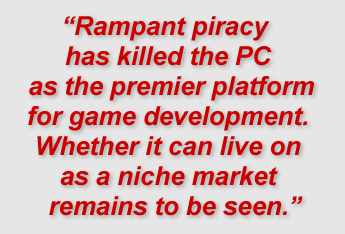 20mm: What recent factors have occurred to influence your opinion?
20mm: What recent factors have occurred to influence your opinion?
Oleg: The analysis of the market for PC and consoles.
Ssnake: None. I’m looking at trends, and they simply aren’t favorable. It may still go on for another five years or more, but it’s probably just a matter of time before one of the remaining two 3D accelerator manufacturers will exit the market. Then what? Can the trend be reverted? I don’t see any contributing factor that has the potential to turn around the situation. 80% of a game publisher’s profits are being made in the console market now, so PC ports still get funded as long as a few extra bucks are to be made there. Rampant piracy has killed the PC as the premier platform for game development. Whether it can live on as a niche market remains to be seen. There’s historic precedence — C64, Amiga, they died out at the height of their popularity because publishers could no longer make a profit with the titles. It’s not so bad with simulations per se, but I think we need to keep an eye on the overall market situation.
Polovski: In our current arena, after a baron period (sorry for the pun) there are some great WWI sims emerging. Interest is still there.
Jason: I have worked in the distribution, sales and development sides of flight simming and I have seen a steady decline in the numbers of units sold and the frequency of releases over the years. I have also talked to other publishers, developers, investors and retailers about the popularity of flight-sims and there is very little interest in the genre beyond our dedicated community. People like to argue this point with me, but the hobby becomes more niche every year.
Flexman: The next gold rush is in virtual items. DLC. Eight billion dollars last year was spent on non-physical items, the video game industry is expected to grow from $50B to $84B by 2014. So I think any simulation that is actually fun to play and offers a good player experience should do well. I’m confident there is a bigger demand for more technically demanding games.
| SimHQ Special Feature / The Future of Simulations / Table of Contents | |||
|
|
|||
| Page 1 | Page 2 | Page 3 | Page 4 |
| Introduction Participants Consumer Simulations |
Software Development | Software Development (continued) |
Controllers and Peripherals |
|
|
|||
| Page 5 | Page 6 | Page 7 | |
| Multiplayer | Distribution and Publishing | Copy Protection and Intellectual Property | |
|
|
|||




